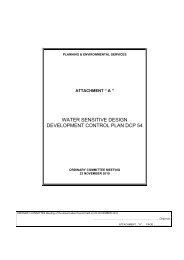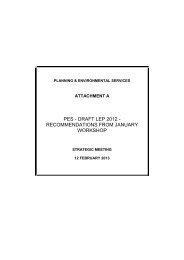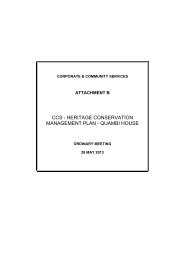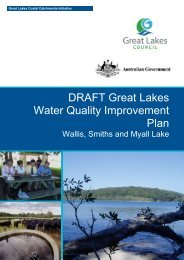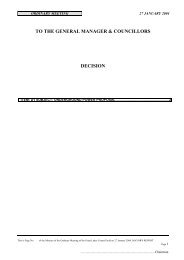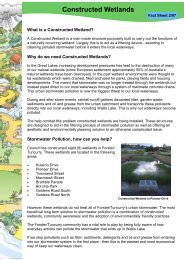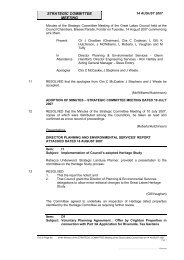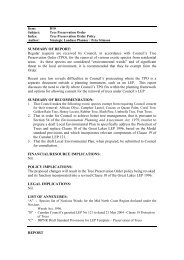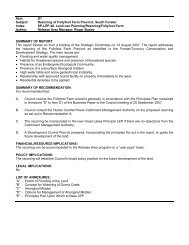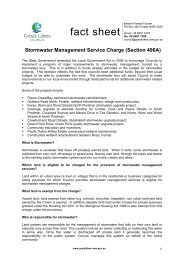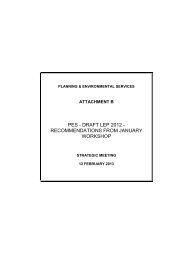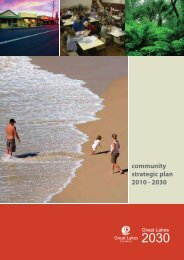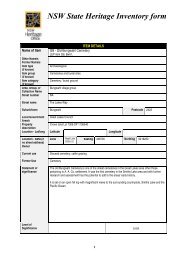13.2 The Wallis Lake Estuary Management Committee - Great Lakes ...
13.2 The Wallis Lake Estuary Management Committee - Great Lakes ...
13.2 The Wallis Lake Estuary Management Committee - Great Lakes ...
You also want an ePaper? Increase the reach of your titles
YUMPU automatically turns print PDFs into web optimized ePapers that Google loves.
<strong>Wallis</strong> <strong>Lake</strong> <strong>Estuary</strong> <strong>Management</strong> Plan<br />
For a more detailed summary of the cultural history of the <strong>Wallis</strong> <strong>Lake</strong> region see <strong>The</strong> <strong>Great</strong> <strong>Lake</strong>s Community<br />
Profile produced by <strong>Great</strong> <strong>Lake</strong>s Council (1999). Alternatively, consult the following references:<br />
Doust J. Past days around <strong>Wallis</strong> <strong>Lake</strong>, its rivers and villages. <strong>Great</strong> <strong>Lake</strong>s Historical Society, Tuncurry.<br />
McMaster D. E. John Wright the settler. Produced by the Wallamba District Historical Society.<br />
Wright J. <strong>The</strong> history of Forster – Tiona, Pacific Palms, Smiths <strong>Lake</strong>, Coomba, Bungwahl. <strong>Great</strong> <strong>Lake</strong>s Historical<br />
Society, Tuncurry.<br />
13.6.2 Natural significance<br />
<strong>The</strong> <strong>Wallis</strong> <strong>Lake</strong> region is of considerable natural significance due to the presence of large areas of diverse<br />
terrestrial and aquatic ecosystems. 20% of the State’s seagrass beds are located in <strong>Wallis</strong> <strong>Lake</strong>, representing the<br />
largest single area in New South Wales at 30.8 km 2 in 1985 (West et. al. 1985). Seagrasses play a major role in the<br />
estuarine processes of nutrient cycling, stabilisation of sediments and in the provision of habitat for many<br />
commercial species larval fish and invertebrates. <strong>The</strong>refore the presence of such large beds of seagrass in <strong>Wallis</strong><br />
<strong>Lake</strong> is most certainly an asset that must be protected and enhanced.<br />
In addition to the presence of significant beds of seagrass, <strong>Wallis</strong> <strong>Lake</strong> is home to 7% of the remaining saltmarsh in<br />
NSW, 0.786 km 2 of mangroves and 70 areas of SEPP 14 wetlands (West et. al. 1985). <strong>The</strong>se areas play a very<br />
important role in filtering sediments and nutrients from land based run-off before it enters the estuary, stabilising<br />
coastal sediments, provision of detrital matter for coastal food chains, and as habitat for many species of birds, fish<br />
and invertebrates.<br />
An extremely diverse community of bird life can be found in <strong>Wallis</strong> <strong>Lake</strong> with over 140 species being regularly<br />
observed. Of these 12 species are classified as vulnerable and 2 as endangered under the Threatened Species<br />
Conservation (TSC) Act (1995). A further 52 species are protected under the international agreements of the<br />
Japanese Australia Agreement for the Protection of migratory Birds, Birds in Danger of Extinction and their<br />
Environment (JAMBA) (1974), and the Agreement between Australia and the People’s Republic of China for the<br />
Protection of Migratory Birds and their Environment (CAMBA) (1986) (Webb, McKeown and Associates 1999).<br />
In addition to the vulnerable bird species of <strong>Wallis</strong> <strong>Lake</strong>, 2 species of reptiles and 9 species of mammals that<br />
regularly use the <strong>Wallis</strong> <strong>Lake</strong> estuary adjacent land are identified as vulnerable under the TSC Act 1995 (Webb,<br />
McKeown and Associates 1999). A further 2 plant species are classified as vulnerable and 1 plant species listed as<br />
endangered.<br />
13.6.3 Industry<br />
<strong>The</strong> aquaculture, fishing, and tourism industries continue to grow in the <strong>Wallis</strong> <strong>Lake</strong> area. As of 2001 the local<br />
commercial fishing industry was valued at $2 million pa, oyster aquaculture industry at $8 million pa, the dairy<br />
industry at $3 million pa, beef production at $1.5 million pa, and the tourism industry in excess of $124 million pa<br />
(<strong>Great</strong> <strong>Lake</strong>s Catchment <strong>Management</strong> Steering <strong>Committee</strong> 2001; Australian Bureau of Statistics). Most of these<br />
industries directly depend upon the health of the <strong>Lake</strong> system.<br />
134




